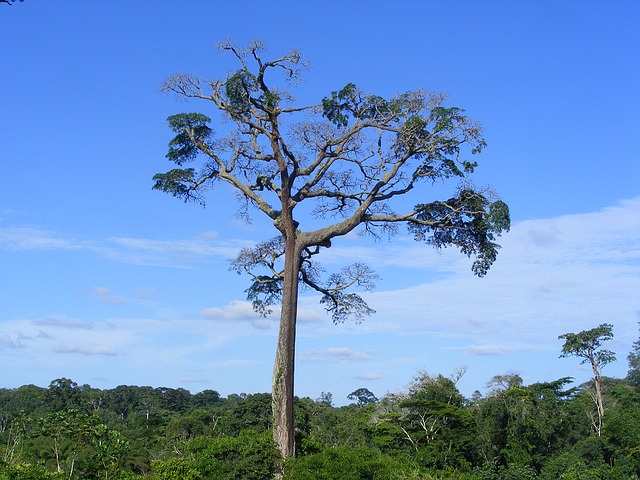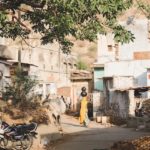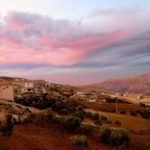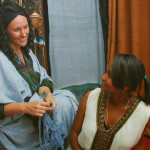Combatting Witchcraft and Sorcery in Cameroon

One morning I woke up in Makak, a small village in central Cameroon, and crawled out from under the gauzy white mosquito netting to start another day. I went toward the kitchen and when I got to the doorway I had the feeling something wasn’t quite right. It wasn’t anything obvious.
I stood in the doorway surveying my simple dirt kitchen for a full minute before I saw it. The long black tail of a snake curved out from behind one of my water buckets. I didn’t react at all at first and then I went back to my room to tell Carlos, my boyfriend, who was still asleep.
I hadn’t been that lucky in love at home but being dumped because of witchcraft was almost too much.
When I told him he shot up out of bed in alarm and immediately went into action. He took my machete into the kitchen, carefully chopped the snake in half, and then let my eleven-year-old neighbor bury it out back to be sure it wouldn’t come back. Then he broke up with me.
The snake was obviously sorcery, he said. Sent by the villagers to be a warning. The next time it wouldn’t be a warning. If we continued to date we would be putting our lives in danger. I hadn’t been that lucky in love at home but being dumped because of witchcraft was almost too much. There was no argument to be made, however, because in Makak, witchcraft was a very real part of daily life.
It was generally understood that you did not want to piss off the wrong person or they would enlist the skills of a sorcerer and do all kinds of things to harm you. For me, I was at the mercy of Carlos’ ex-girlfriend, who regularly threatened to launch the nsong on me.
I’ve dated guys with crazy ex-girlfriends before but this was a whole new level of crazy. The nsong was said to be a form of powerful sorcery in which your insides melted and you died within three days. Sounds like hemorrhagic fever to me and I’m pretty sure you can’t just wish that on someone, but in Makak, this kind of scenario was a real fear in people’s daily lives. Hence the moment with the snake and the abrupt break-up. Relationship over…the ex-girlfriend wins.
One day before the snake incident, Carlos and I were talking and I insisted that Americans don’t believe in sorcery and that it simply doesn’t exist in the States. Of course it does, he countered. In America, you use magic for good. You’ve used magic to create airplanes and cure diseases and such. Here in Cameroon, we use magic for bad, to hurt people.
My first thought was, oh, by sorcery he really means science. I guess in a place that doesn’t have electricity, running water, internet or paved roads our development must seem like magic. And so, Carlos went on to explain to me all of the rules for staying safe from sorcery while living in Makak. And I hope you won’t think less of me when I tell you that I followed most of them.
First of all, if someone greeted me after dark, I kept my head down and just kept walking. This felt really wrong in a culture so focused on hospitality but I had been warned that if I greet someone I don’t know, they might steal my soul and sell me into eternal bondage on slave plantations that exist in the mystical realm and are run by sorcerers. Sounds crazy but I wasn’t taking any chances.
I guess in a place that doesn’t have electricity, running water, internet or paved roads our development must seem like magic.
Second of all, when the old ladies came into the compound where I lived, my eleven-year-old neighbor would fly into action. It was not uncommon to suddenly find Poupina running into my hut out of breath and frantically shutting all of the heavy wooden windows and locking the door. I didn’t have electricity so that would leave us sitting silently in the dark.
The first time this happened, I was baffled and asked Poupina what in the world was going on. Was the village under attack? Was there a big storm coming? Were we in danger? Very seriously she told me she was protecting me from the woman, who is known around the village to be a sorcerer, who had come to visit my neighbor. Again, it felt ridiculous, but somehow I found myself going along with it and hunkering down in the dark until the woman left.
Third, as we lay in bed one night listening to the rain, I mused about how much I love the sound of rain pitter pattering on the tin roof. Carlos immediately told me never to say that. By complimenting the rain, I was inviting my own death. People were usually buried in the rainy season because the ground was softer to dig, so death became associated with the rain.
Sometimes it was easy to see the connections between practicalities in life and beliefs about witchcraft and sometimes it wasn’t so clear. During my year in Makak, I not only found myself navigating my personal life amidst the culture of sorcery but was often stumped by the impact these beliefs had on my work there.
Anyone who died suddenly was said to have been a victim of sorcery. As a public health volunteer, I found this tricky since much of my HIV/AIDS education and prevention work came to a halt amidst conspiracy theories and the idea that people weren’t dying from preventable illnesses but from evil spells. This might be a clear case in which science wins out over magic.
The condom on a banana demonstration was paramount to the Peace Corps health volunteer experience. But it wasn’t useful if you couldn’t get past the conspiracy theory that the Western world had intentionally infected condoms with HIV and sent them to Africa, where they sold them for cheap, to get rid of Africans. I countered that rumor the best I could but what evidence did I really have? I would go back to science and explain that viruses couldn’t live in latex, but this was not a world that relied on science so the conspiracy theory often won out.
Combatting Witchcraft and Sorcery in Cameroon.
On a side note, this condom demonstration was also not effective when people walked away thinking that you could protect yourself from sexually transmitted diseases by putting a condom on a banana and setting it on your bedside table before having sex.
There were also traditional healers who claimed they could cure HIV/AIDS. Families gathered together all of their resources to pay for this treatment but in the end, as far as I could tell, it was just water. Even though it was frustrating to be navigating public health education in a magical world, it did make me think about the utility of these beliefs.
Maybe the nsong was invented to explain a version of hemorrhagic fever in a place with little access to health care or treatment? My neighbor was a traditional bone setter and when people came to him with broken bones he simply laid his hands on them. They all swore he healed them, but then again, time heals most things too, and what other options for treatment did this community have?
Magic may not be our science but it was serving a purpose for my community.
There wasn’t a single hospital or clinic within walking distance and travel to the capital was expensive. Similarly, treatment for HIV/AIDS was inaccessible to most so denying its existence or turning to traditional healers was all some people could rely on. Magic may not be our science but it was serving a purpose for my community.
Now, at this point in the story, you might be questioning my reliability as a narrator. Am I trying to tell you that magic and science are equally valid and that I actually believe in sorcery? That just might be the beauty of Peace Corps. I am telling you that as I lived with the Bassa, made friends, and learned about their culture, I started to think that my Western science wasn’t the only thing out there and that maybe, just maybe, there were other ways of explaining the world.
Katie wrote this article as a participant in Pink Pangea’s Travel Writing Intensive Course.
Photo credit by Pixabay.









One thought on “Combatting Witchcraft and Sorcery in Cameroon”